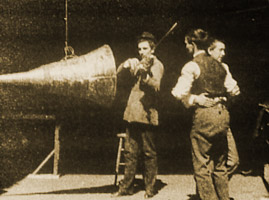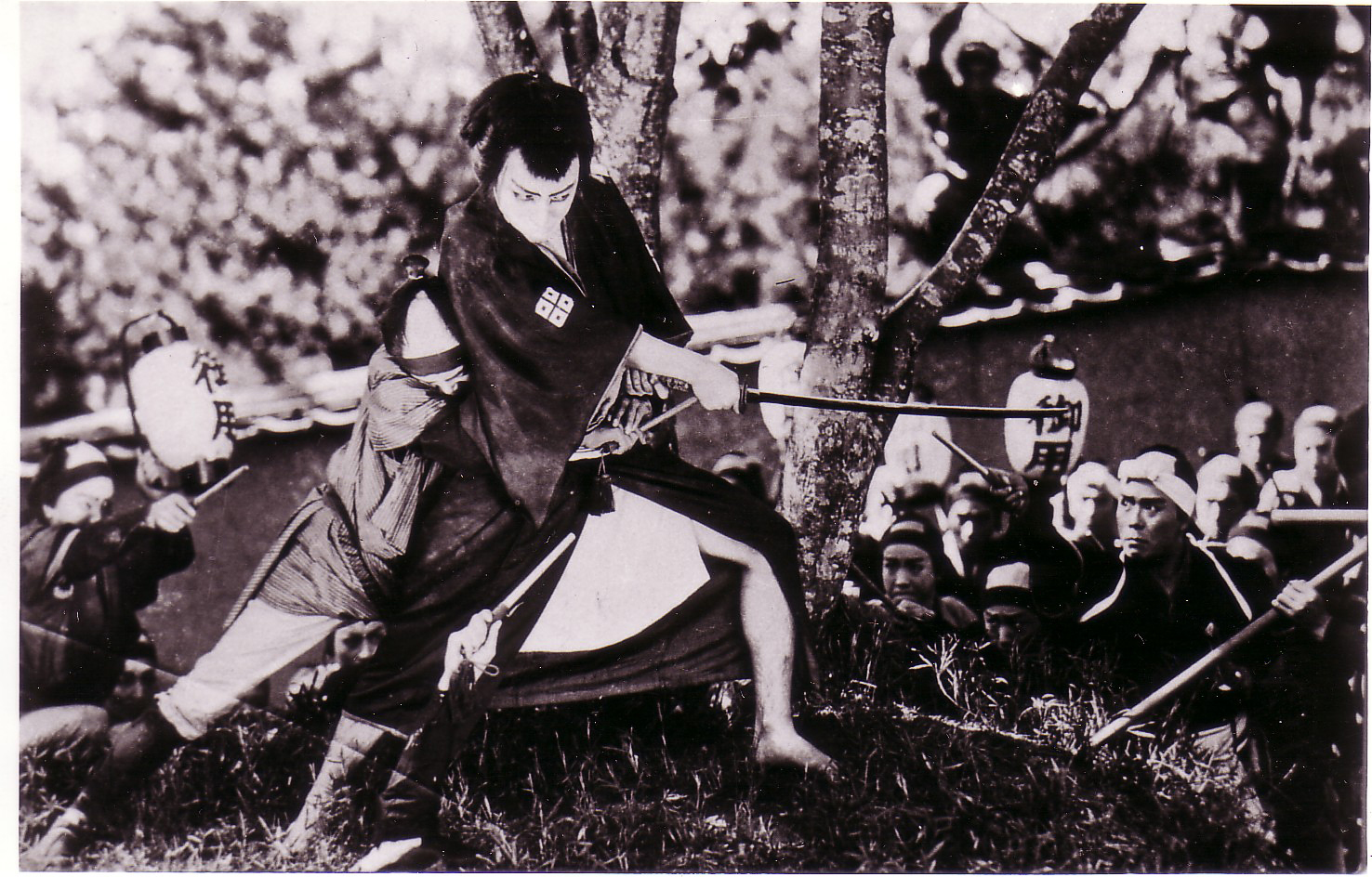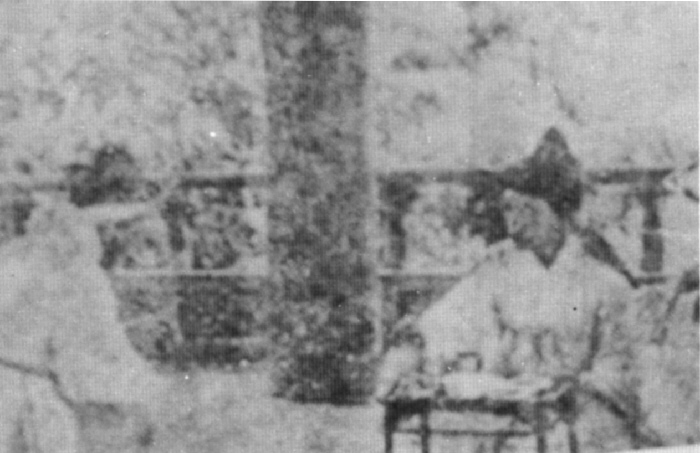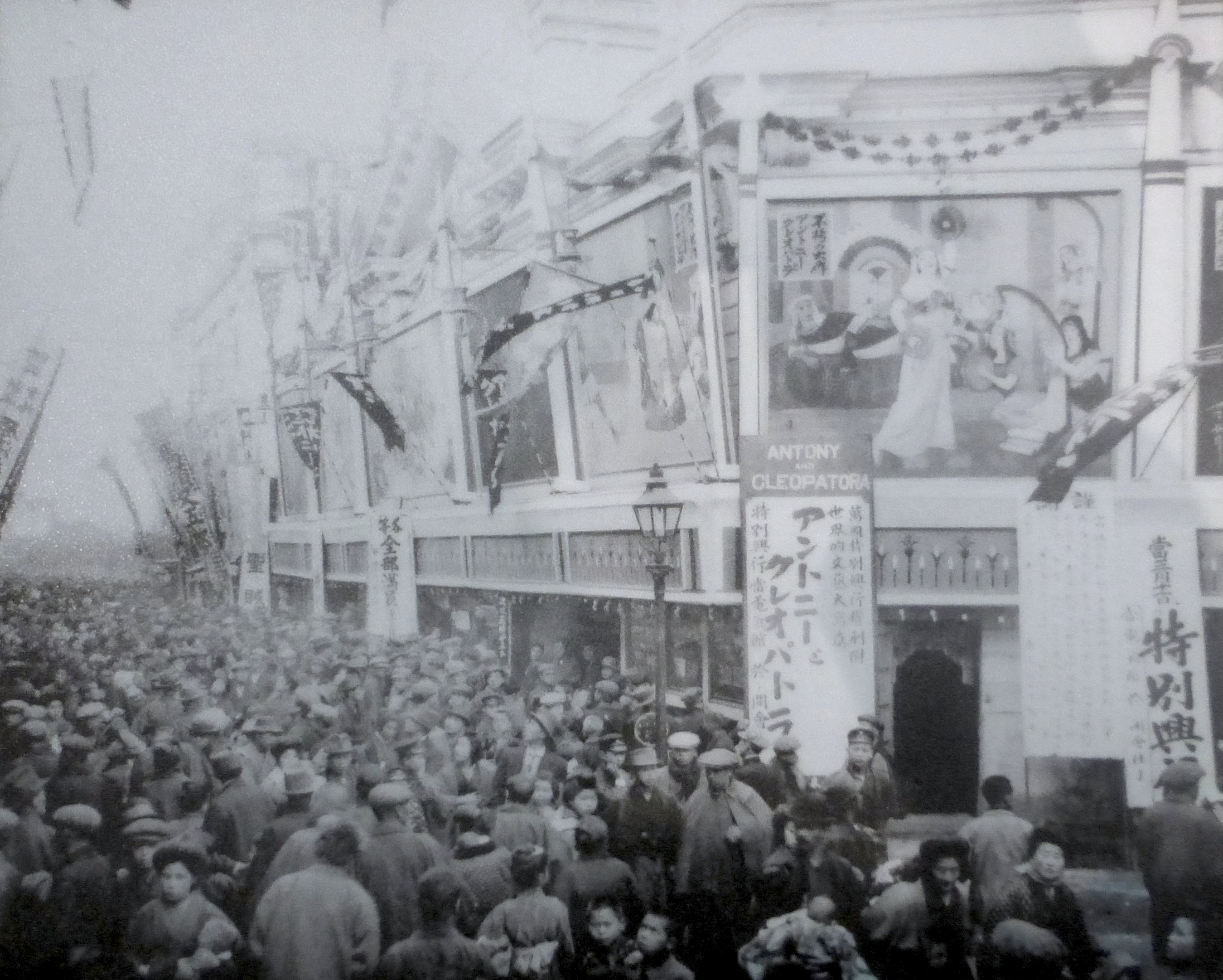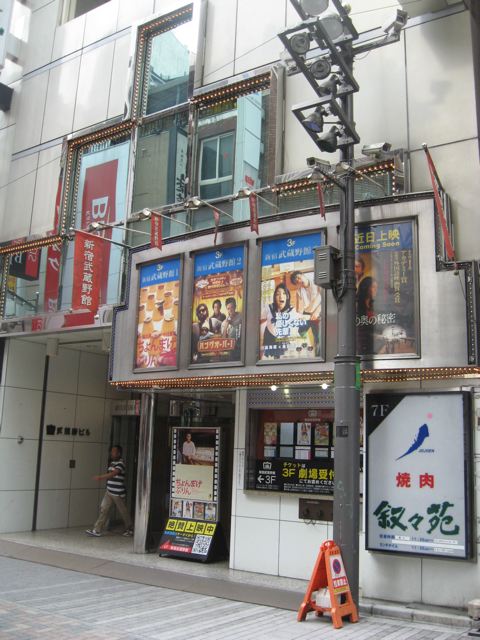|
Benshi
were Japanese performers who provided live narrator, narration for silent films (both Japanese films and Western world, Western films). ''Benshi'' are sometimes called or . Role The earliest films available for public display were produced by Western studios, portraying brief scenes of everyday life, often less than a minute long. The first were thus hired to provide added value, greater value for the high ticket prices charged by theaters relative to other public entertainment, while also giving technical and cultural context to the audience. The operation of the projector itself would be described before the showing, and then explanations of Western culture would accompany the film with the standing to the side of the screen. This commentary was as much part of the theater-going experience as the film itself. In one instance, a was able to avoid government censorship of The Kiss (1896 film), ''The Kiss'' by describing kissing in Western culture to be as casual a greeting as ... [...More Info...] [...Related Items...] OR: [Wikipedia] [Google] [Baidu] |
Midori Sawato
is a Japanese benshi or katsuben (silent film narrator). Life Originally from Tokyo, Midori Sawato graduated from the Department of Philosophy, Hosei University. She first decided she wanted to become a benshi in 1972, when she saw the silent film '' The Water Magician'' by Kenji Mizoguchi. She was particularly impressed with the performance as benshi of the man who would become her teacher, Shunsui Matsuda. After studying under Matsuda, Sawato made her debut in 1973. She is an active benshi who has garnered high praise through her wide variety of activities and performances in Japan and overseas. Of the ten benshi working in Japan (), Sawato is considered the most famous. Her repertoire of over 500 films includes genres as varied as contemporary cinema, historical movies and western films, for which she provides well-formed interpretations of the work. She has received many awards, including the Award for Excellence in the field of Dramatic Performance at the Agency for Cultur ... [...More Info...] [...Related Items...] OR: [Wikipedia] [Google] [Baidu] |
Cinema Of Taiwan
The cinema of Taiwan or Taiwan cinema ( zh, t=臺灣電影 or ) is deeply rooted in the island's History of Taiwan, unique history. Since its introduction to Taiwan in 1901 under Taiwan under Japanese rule, Japanese rule, cinema has developed in Taiwan under ROC rule through several distinct stages, including ''taiyu pian'' (Taiwanese film) of the 1950s and 1960s, genre films of the 1960s and 1970s, including ''jiankang xieshi pian'' (healthy realist film), ''wuxia pian'' (sword-fighting film), ''aiqing wenyi pian'' (literary romantic film), ''zhengxuan pian'' (political propaganda film), and ''shehui xieshi pian'' (social realist film), Taiwan New Cinema of the 1980s, and the new wave of the 1990s and afterwards. Starting in the second decade of the new millennium, documentary films also became a representative part of Taiwan cinema. Characteristics Taiwanese directors Taiwan cinema is internationally known for its representative directors, including Fong Chiung, King Hu, Ho ... [...More Info...] [...Related Items...] OR: [Wikipedia] [Google] [Baidu] |
Sound Film
A sound film is a Film, motion picture with synchronization, synchronized sound, or sound technologically coupled to image, as opposed to a silent film. The first known public exhibition of projected sound films took place in Paris in 1900, but decades passed before sound motion pictures became commercially practical. Reliable synchronization was difficult to achieve with the early sound-on-disc systems, and amplification and recording quality were also inadequate. Innovations in sound-on-film led to the first commercial screening of Short film, short motion pictures using the technology, which took place in 1923. Before sound-on-film technology became viable, soundtracks for films were commonly played live with organs or pianos. The primary steps in the commercialization of sound cinema were taken in the mid-to-late 1920s. At first, the sound films which included synchronized dialogue, known as "talking pictures", or "talkies", were exclusively shorts. The earliest feature fil ... [...More Info...] [...Related Items...] OR: [Wikipedia] [Google] [Baidu] |
Silent Film
A silent film is a film without synchronized recorded sound (or more generally, no audible dialogue). Though silent films convey narrative and emotion visually, various plot elements (such as a setting or era) or key lines of dialogue may, when necessary, be conveyed by the use of inter- title cards. The term "silent film" is something of a misnomer, as these films were almost always accompanied by live sounds. During the silent era, which existed from the mid-1890s to the late 1920s, a pianist, theater organist—or even, in larger cities, an orchestra—would play music to accompany the films. Pianists and organists would play either from sheet music, or improvisation. Sometimes a person would even narrate the inter-title cards for the audience. Though at the time the technology to synchronize sound with the film did not exist, music was seen as an essential part of the viewing experience. "Silent film" is typically used as a historical term to describe an era of cinema p ... [...More Info...] [...Related Items...] OR: [Wikipedia] [Google] [Baidu] |
Neo-Benshi
Neo-Benshi is the practice of producing live alternate voice-overs for movies. The art form’s acknowledged starting point is in Korea, Japan, Taiwan and other East Asian nations during the silent film era. ''Benshi'' is a Japanese word referring to the oral "interpreter" who performed a live narrative accompaniment to silent movies, in lieu of showing intertitles with dialogue, etc. In Korean the practice is known as ''pyônsa''. Currently, it is finding a resurgence among experimental poets in the San Francisco Bay area and Los Angeles. Movietelling Movietelling is a reinstatement, or retelling, of the film narrator practice(s). Long time practitioner and one of the foremost scholars on the subject of live film narration, Walter Lew, coined this phrase with the intention of reviving and revamping what he considers to have been an international practice, finding its roots throughout Europe, Asia, and the United States. In January 2008, Lew, along with several poets and video a ... [...More Info...] [...Related Items...] OR: [Wikipedia] [Google] [Baidu] |
Musei Tokugawa
was a Japanese ''benshi'', actor, raconteur, essayist, and radio and television personality. Career Musei (as he was called) first came to prominence as a ''benshi'', a narrator of films during the silent era in Japan. He was celebrated for his restrained but erudite narration that was popular among intellectual film fans.Dym, Jeffrey A.Tokugawa Musei: A Portrait Sketch of One of Japan's Greatest Narrative Artists" ''In Praise of Film Studies: Essays in Honor of Makino Mamoru''. Eds. Aaron Gerow and Abé Mark Nornes (Kinema Club, 2001). He concentrated on foreign films such as ''The Cabinet of Dr. Caligari'' at high-class theaters like the Aoikan and the Musashinokan, but also performed Japanese works such as Teinosuke Kinugasa's experimental masterpiece ''A Page of Madness'' (1926). As the silent era ended, Musei switched to storytelling on stage and on radio, and also began acting and doing narrations in films. He was also famous for his essays, humorous novels, and autob ... [...More Info...] [...Related Items...] OR: [Wikipedia] [Google] [Baidu] |
Vanilla Yamazaki
is a katsudō-benshi, voice actor, an actress, a choreographer, and a tarento born January 15, 1978, in Sendai, Miyagi Prefecture, Japan and raised in Ōta, Tokyo Tokyo, officially the Tokyo Metropolis, is the capital of Japan, capital and List of cities in Japan, most populous city in Japan. With a population of over 14 million in the city proper in 2023, it is List of largest cities, one of the most .... References 1978 births Japanese television actresses Living people Voice actresses from Sendai Japanese choreographers Japanese women choreographers 21st-century Japanese actresses {{Japan-tv-actor-stub ... [...More Info...] [...Related Items...] OR: [Wikipedia] [Google] [Baidu] |
Japanese Film
The , also known domestically as , has a history that spans more than 100 years. Japan has one of the oldest and largest film industries in the world; as of 2022, it was the fourth largest by number of feature films produced, producing 634 films, and third largest in terms of box office revenue, standing at $1.5 billion. Films have been produced in Japan since 1897. During the 1950s, a period dubbed the "Golden Age of Japanese cinema", the ''jidaigeki'' films of Akira Kurosawa as well as the science fiction films of Ishirō Honda and Eiji Tsuburaya gained Japanese cinema international praise and made these directors universally renown and highly influential. Some of the Japanese films of this period are now rated some of the greatest of all time: ''Tokyo Story'' (1953) ranked number three in '' Sight & Sound'' critics' list of the 100 greatest films of all time and also topped the 2012 ''Sight & Sound'' directors' poll of The Top 50 Greatest Films of All Time, dethroning ''C ... [...More Info...] [...Related Items...] OR: [Wikipedia] [Google] [Baidu] |
Cinema Of Korea
The cinema of Korea encompasses the film industries of North Korea and South Korea, as well as the historical film industries of Korea as the kingdom of Joseon and under Korea under Japanese rule, Japanese occupation. While both countries have relatively robust film industries today, only South Korean films have achieved wide international acclaim. North Korean films typically portray Juche ideology or revolutionary themes. South Korean films enjoyed a "golden age" during the late 1950s and 1960s, but by the 1970s had become generally considered to be of low quality. Nonetheless, by 2005 South Korea became a nation that watched more domestic than imported films in theatres. This was partially a result of laws placing limits on the number of foreign films able to be shown per theatre per year, but this was mostly due to the growth of the Korean entertainment industry, which quadrupled in size during this period. It has been noted that Korean movies have consistently outperformed fo ... [...More Info...] [...Related Items...] OR: [Wikipedia] [Google] [Baidu] |
Denkikan
The was the first dedicated movie theater in Japan. Originally a hall built in Asakusa's Rokku theater district to present spectacles featuring electricity ("denki" in Japanese), it was converted into a movie theater in October 1903 by Yoshizawa Shōten, the most successful of the film companies at the time. Featuring benshi such as Saburo Somei, it quickly became the symbol of the new phenomenon of the motion pictures and many cinemas around Japan were later created that borrowed the name "Denkikan." It later became a Nikkatsu theater and then a Shochiku theater before finally closing in 1976. The vacant site was used as flea market until 1987 when a commercial and residential complex was constructed. A historically accurate model of the theater is currently on display at the Edo-Tokyo Museum in Tokyo. It is also cited in Kaizo Hayashi is a Japanese film director and screenwriter. He made his directorial debut with '' To Sleep so as to Dream'' (1986). He is best known for ... [...More Info...] [...Related Items...] OR: [Wikipedia] [Google] [Baidu] |
Musashinokan
The is a long-standing movie theater located on the east side of Shinjuku Station in Tokyo, Japan. Originally started as the Musashinokan in May 1920, it quickly became Tokyo's premiere independent high-class theater showing foreign films. The theater program featured top-level film criticism and a committee of the managers and film critics such as Akira Iwasaki helped program the films shown there. It was also famous in the silent era for the erudite benshi narration of Musei Tokugawa. It also occasionally showed Japanese films such as Teinosuke Kinugasa's ''A Page of Madness is a 1926 Japanese Silent film, silent Experimental film, experimental Horror film, horror film directed by Teinosuke Kinugasa. Lost film, Lost for 45 years until it was rediscovered by Kinugasa in his storehouse in 1971, the film is the produc ...''. When it was rebuilt in 1968 as part of a multi-purpose building, occupying the seventh floor, it changed its name to the Shinjuku Musashinokan. Its own ... [...More Info...] [...Related Items...] OR: [Wikipedia] [Google] [Baidu] |

